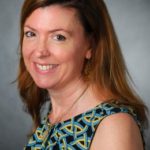 On St. John’s University Week: What gaps and pitfalls do teacher candidates have to navigate?
On St. John’s University Week: What gaps and pitfalls do teacher candidates have to navigate?
Mary Beth Schaefer, associate professor in the department of curriculum and instruction at St. John’s University, says there are four main issues to avoid.
Mary Beth Schaefer is Interim Associate Dean of Graduate Studies in the School of Education and Associate Professor in the Department of Curriculum & Instruction. She holds a doctorate in Literacy from the University of Pennsylvania. She recently published articles in “Urban Education” and “The Journal of Adult and Adolescent Literacy.” Other recent outlets for her research include journals such as Middle Grades Research Journal, Middle School Journal, Research in Middle Level Education, Tamara, and Voices in the Middle. The focus of her research is on middle grade students’ college and career readiness and responses to literature. She and co-author Lourdes M. Rivera currently have a book under contract with Palgrave on the research and practice of infusing career development into the academic programs of middle and high schools.
Minding the Gaps in an Extended Clinical Practice
Being with 6 student teachers for a year in a secondary school offered me, as the professor and researcher, an inside view on how teacher candidates learn to become teachers. In that process, the issue of boundaries came to the fore of my research: traditional boundaries between theory and practice, and class time and class space were eliminated. In the absence of traditional boundaries remained gaps. These gaps were curious and confounding. The research question became, “What do teacher candidates and their professor learn about teaching while minding and mining gaps in pedagogy and practice?”
Four gaps were identified from one year of data. The first gap related to the professor as the embodiment of the space between theory and practice. This became a literal expression when 3 English teacher candidates and I taught an 11th grade writing class in ways that bumped up against silent 17 year olds and a classroom English teacher with very different notions of how a writing class should be structured. The second gap related to when teacher candidates and I wrestled with what it meant to teach English in an urban school. We envisioned teaching English as preparing students for life, while the school’s notions of teaching English revolved around correct ways to read and write. The third gap was about professor/student relationships. With few boundaries around personal space, we had new and sometimes uncomfortable roles to navigate. Finally, the 4th gap was related to state-mandated testing. How do we prepare secondary students for state tests in ways that matter AND prepare student teachers for teacher certification exams in ways that matter? Minding and mining these 4 gaps provided powerful teaching and learning experiences.
